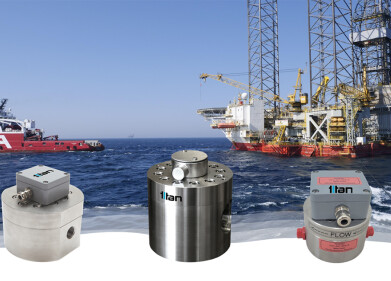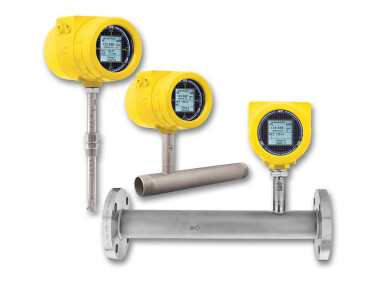-
.jpg) More than 500 VEGA instruments are now in service at the Ningbo site, including the radar sensor VEGAFLEX 81.
More than 500 VEGA instruments are now in service at the Ningbo site, including the radar sensor VEGAFLEX 81. -
.jpg) The Chinese company Yisheng Petrochemical is a specialist in terephthalic acid and has achieved a market share of about 30 % in China.
The Chinese company Yisheng Petrochemical is a specialist in terephthalic acid and has achieved a market share of about 30 % in China.
Flow level pressure
Keeping production processes running smoothly in the petrochemical sector
Dec 12 2022
Radiometric and radar measuring instruments for the production of terephthalic acid.
Yisheng Petrochemical has been working with VEGA almost since the very beginning of terephthalic acid production in Zhejiang province. In the meantime, over the last 18 years, a close partnership appreciated by both sides has emerged.
Even though the designation “purified terephthalic acid” (PTA) is not easy to pronounce, everyone has come into contact with this substance at some point. About 90% of the annual global production of terephthalic acid goes into the production of the plastic “polyethylene terephthalate” (PET), which in turn is used for food packaging, especially beverage bottles. Terephthalic acid is also an ingredient in the production of technical polyesters such as polybutylene terephthalate (PBT) for thermally demanding automotive applications, e.g. in engine compartments, and − in relatively small quantities − of aromatic polyamides of the aramid type for highly tear-resistant fibres. VEGA also values this plastic highly and uses it in most of its plastic sensor housings because of its particularly high chemical and thermal resistance.
The Chinese company Yisheng Petrochemical Co., a specialist in terephthalic acid production, has been continuously growing and capturing more and more of the world market since its founding in 2003. It produces technical grade terephthalic acid at its Ningbo site in Zhejiang province. Four other projects having to do with PTA were launched over time. For example, the company invested in the Dalian Yisheng Factory and the Hainan Yisheng Factory. By July 2019, its PTA production capacity nationwide had reached approximately 45 million tonnes, 13 million tonnes of which were produced by Yisheng Petrochemical alone − this represents a market share of about 30%.
Long-term collaboration
Yisheng Petrochemical has been working together with VEGA since 2004. For level measurement with radar, for example, it uses only VEGA sensors. “We had to overcome difficult situations already during the market development phase, which, during Yisheng Petrochemical’s first project, led to a kind of saying making the rounds in the company,” explains Du Daquan, Technical Manager at Yisheng Petrochemical: “Use VEGA products and the project will run smoothly. Nothing works without VEGA products.” At that time, VEGA was in contact with another company that was also being set up. This company had decided to use cheaper sensors and, as a result, was repeatedly confronted with problems that actually prevented realization of the project for a long time.
Whereas in the early days the company was still supported by VEGA engineers during installation and setup, this has changed in recent years. Yisheng Petrochemical now installs and commissions all VEGA instruments itself. "We’ve learned a lot from VEGA’s know-how", says Du Daquan, who immediately lists off the most important arguments in favour of VEGA: “The measuring instruments are very compact and easy to install. The user interface is clear and understandable and all settings are easy to make.”
Meanwhile, more than 500 VEGA instruments are in service at the Ningbo location, including the radar sensors VEGAPULS 68, VEGAPULS 69, VEGAPULS 64, VEGAFLEX 81, the vibrating level switch VEGASWING 63 and the radiometric SOLITRAC 31 for level measurement as well as MINITRAC 31 for density determination. “In the meantime we’re already using the fourth generation of radar measuring instruments. But as far as VEGA employees go, we’re only at the second generation,” adds Du Daquan jokingly.
Another advantage: the robustness of the sensors in particular has significantly reduced the maintenance and servicing work that the operators and metrology technicians normally have to perform. For example, the ultrasonic sensors for continuous level measurement, which were first installed in 2004, have been operating flawlessly, with only minimal servicing, until now.
Oxidation and refining
Basically, the PTA plant consists of two main parts, the oxidation unit and the refining unit. In the oxidation unit, the catalytic oxidation process is applied, whereby crude terephthalic acid (CTA) is obtained through the oxidation of p-xylene. This is followed by a second oxidation, crystallization, a first mixing (filtration), drying and then pneumatic conveying to the refining unit. The refining unit is the next stage. There are also a number of different process steps here, such as mashing, pressurizing, heating, reacting and crystallizing. This is followed by a second mixing and drying, as well as aerating, etc. Only when all these process steps have been completed is the end product obtained.
VEGA sensors are used in both processes, i.e. in the oxidation reactor and in the subsequent processing steps. In the oxidation reactor, for example, radiometric sensors monitor the quantity of catalysts that are added to the process. Their advantage is that they measure contactlessly from the outside and thus operate without being affected by the process conditions. Almost 90% of the processes are controlled automatically. Each individual process must be controlled very precisely, otherwise the product quality would be severely impacted. The instruments are exposed to a variety of challenges, such as high temperatures between 100 and 310 °C and pressures up to 600 bar, as well as deposit buildup. The chemical aggressiveness of the process must also be taken into account.
Another deployment site is the end product storage facility, where an electromechanical sounding system had been used for many years to measure level. However, it malfunctioned often due to the worn-out mechanical components and delivered incorrect percentage and level data. The result: the system had to be serviced frequently. In addition, assembly and disassembly proved to be very difficult. Today, radar sensors from VEGA monitor the level of the product in the tanks and the filling process, right up to the top. This allows the capacity of the storage facility to be better utilised, while at the same time increasing reliability. “It was very helpful that we were able to test VEGAPULS 69 for 14 days before replacing the old measuring system. After the measuring results turned out to be very good, we just left VEGAPULS 69 in place,” says Du Daquan.
Reaching the goal together
But it’s not just technology that counts. Yisheng Petrochemical also appreciates the mutual trust, the close contact with VEGA engineers, the straightforward purchasing process and the reliable customer service. “As soon as VEGA launches new products on the market, we can test them,” continues Daquan. “That was the case, for example, when the radiation-based measuring instruments of the PROTRAC series were revised. We were able to test them right away.” These radiometric instruments were then used in the new project, which will produce 3 million tons of terephthalic acid per year. Yisheng Petrochemical is therefore convinced that the good collaboration with VEGA will continue. Not least because its processing facilities will be automated more and more in the future, making reliable, intelligent sensors an absolute necessity.
Digital Edition
PIN 26.1 Feb/Mar 2025
March 2025
Analytical Instrumentation - Elemental Analysis for Quality and Process Control at Refineries, for Lubricants and Wear Metals in Engine Oils - Synthetic Lubricants: New Developments - Scaling...
View all digital editions
Events
Apr 29 2025 Mumbai, India
Apr 29 2025 Edmonton, AB, Canada
May 05 2025 Houston, Tx, USA
May 06 2025 Nuremberg, Germany
Canada Gas & LNG Exhibition & Conference
May 06 2025 Vancouver, BC, Canada
.jpg)
.jpg)
.jpg)
.jpg)


















